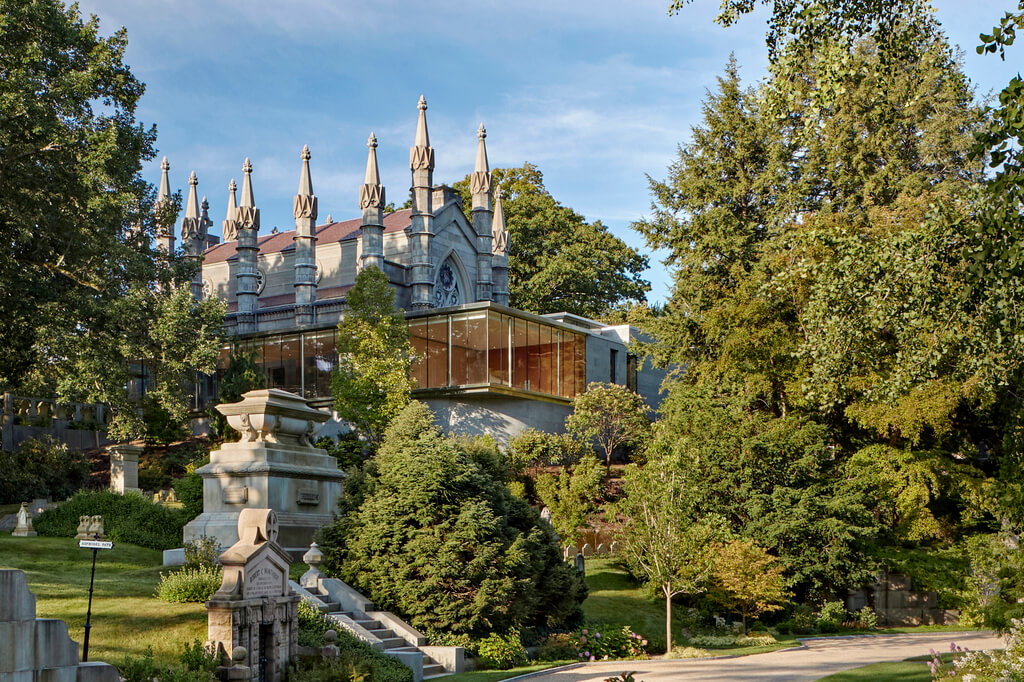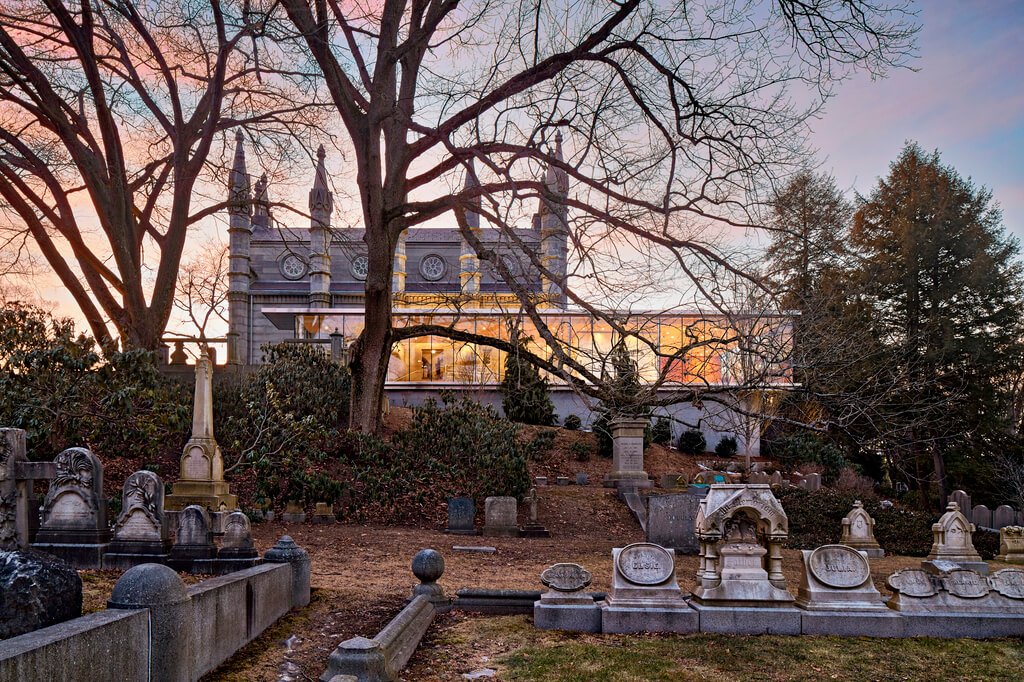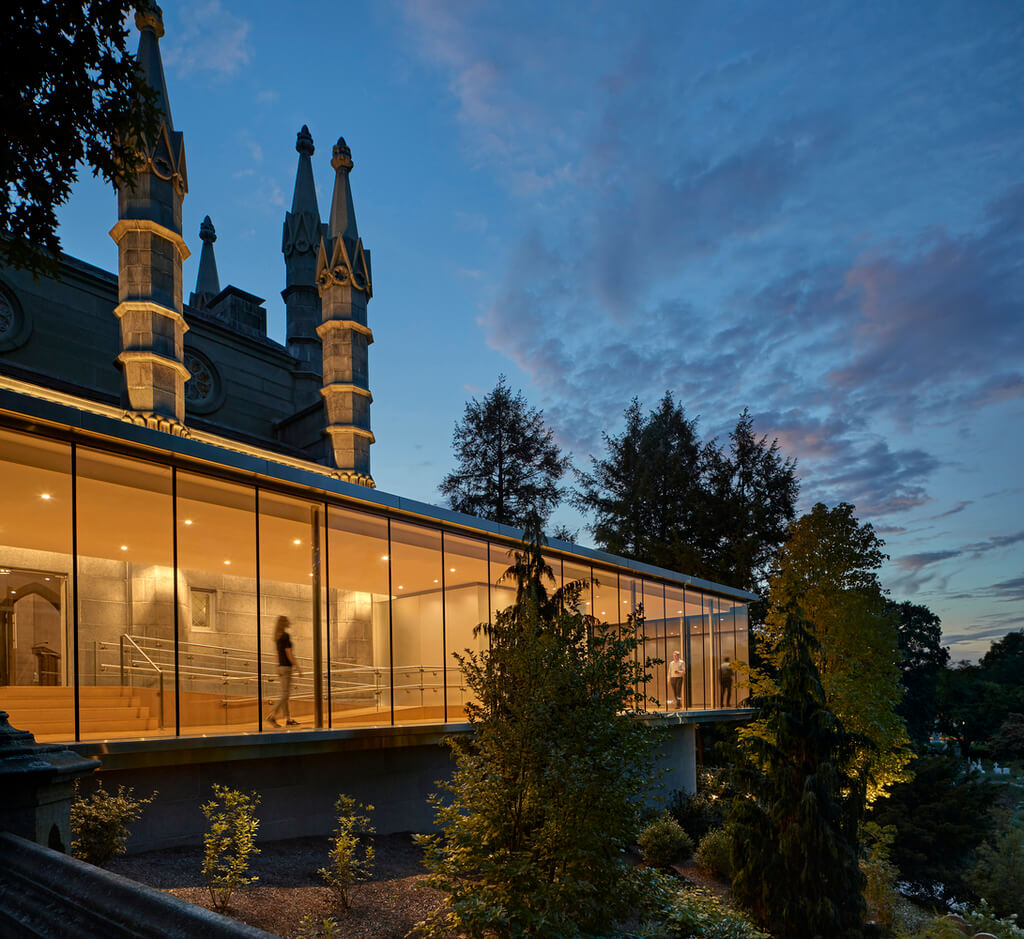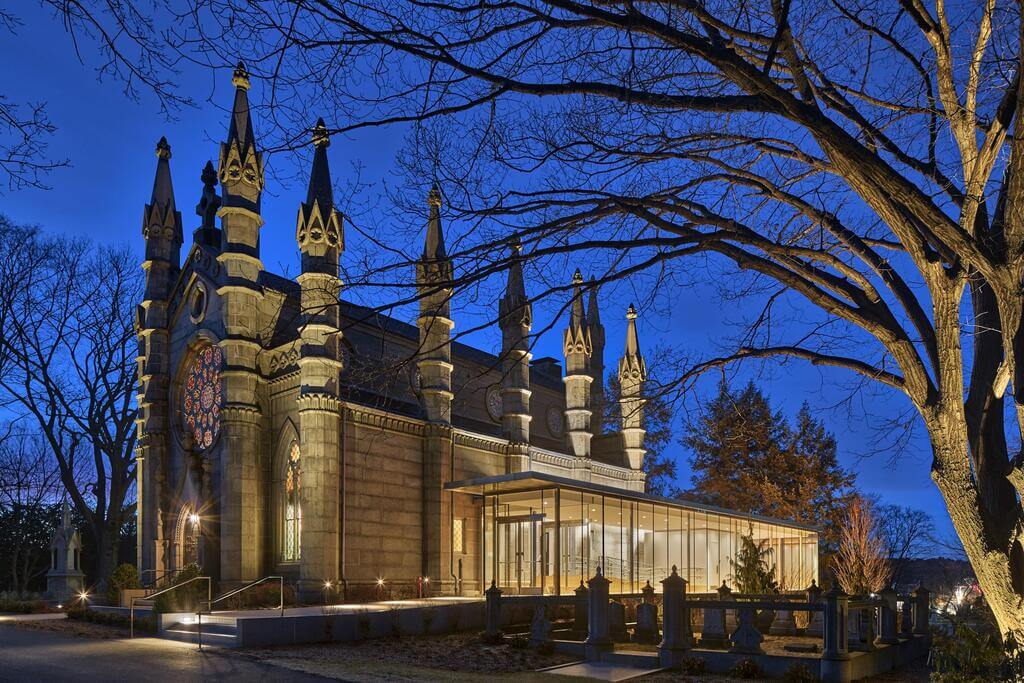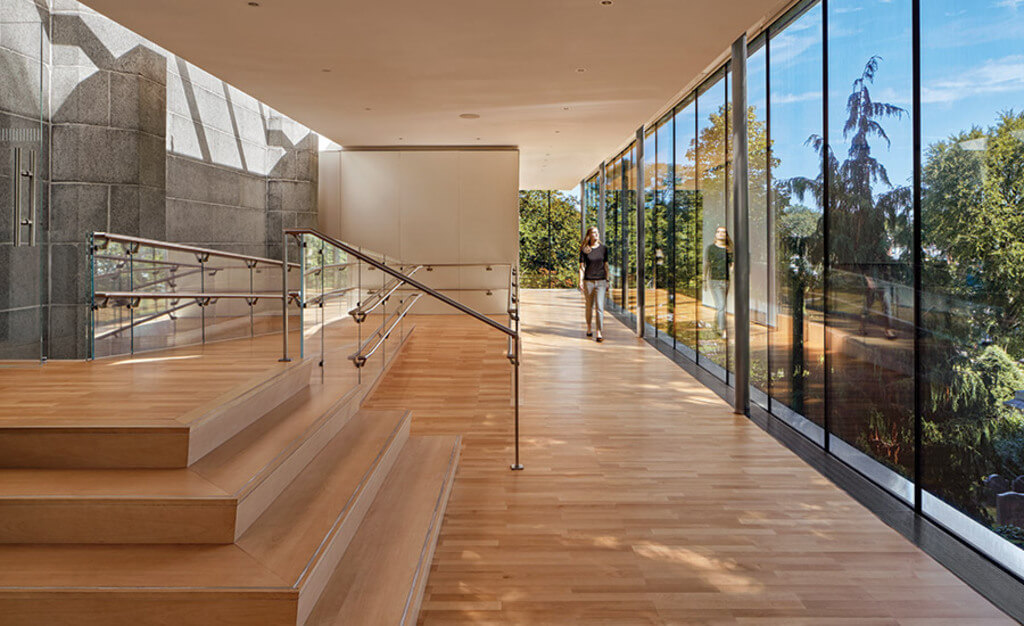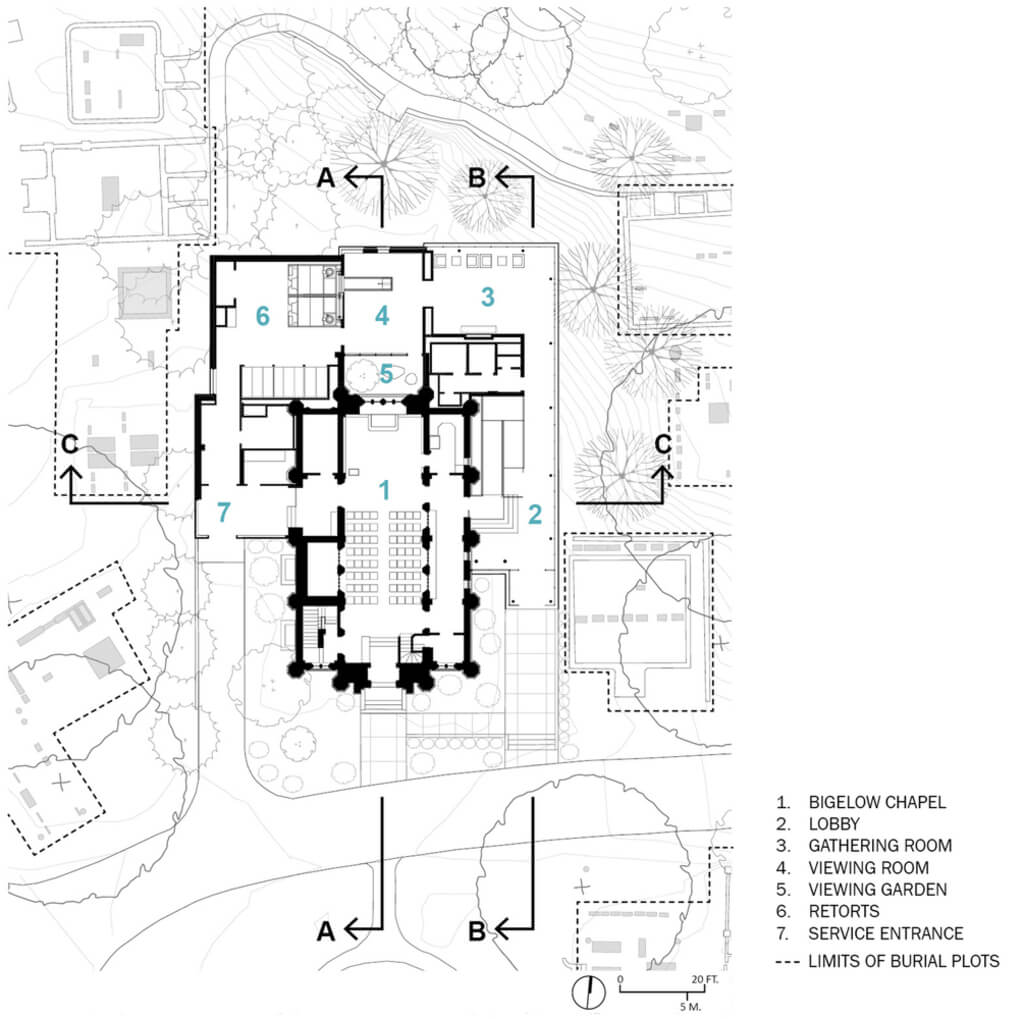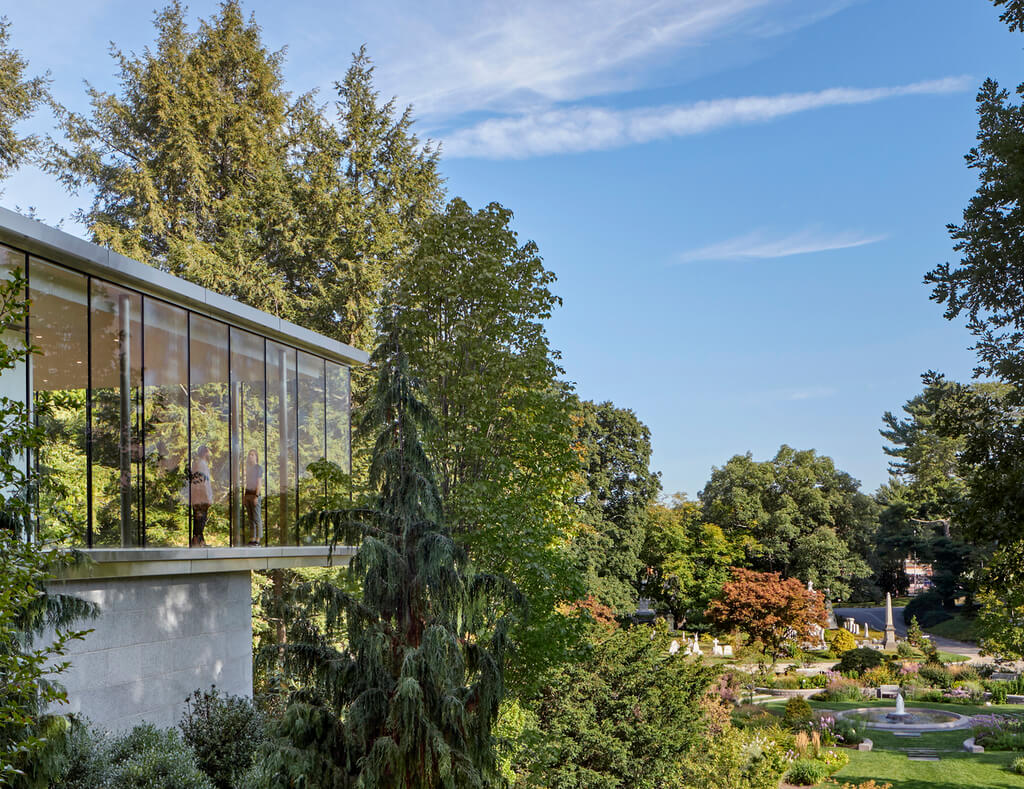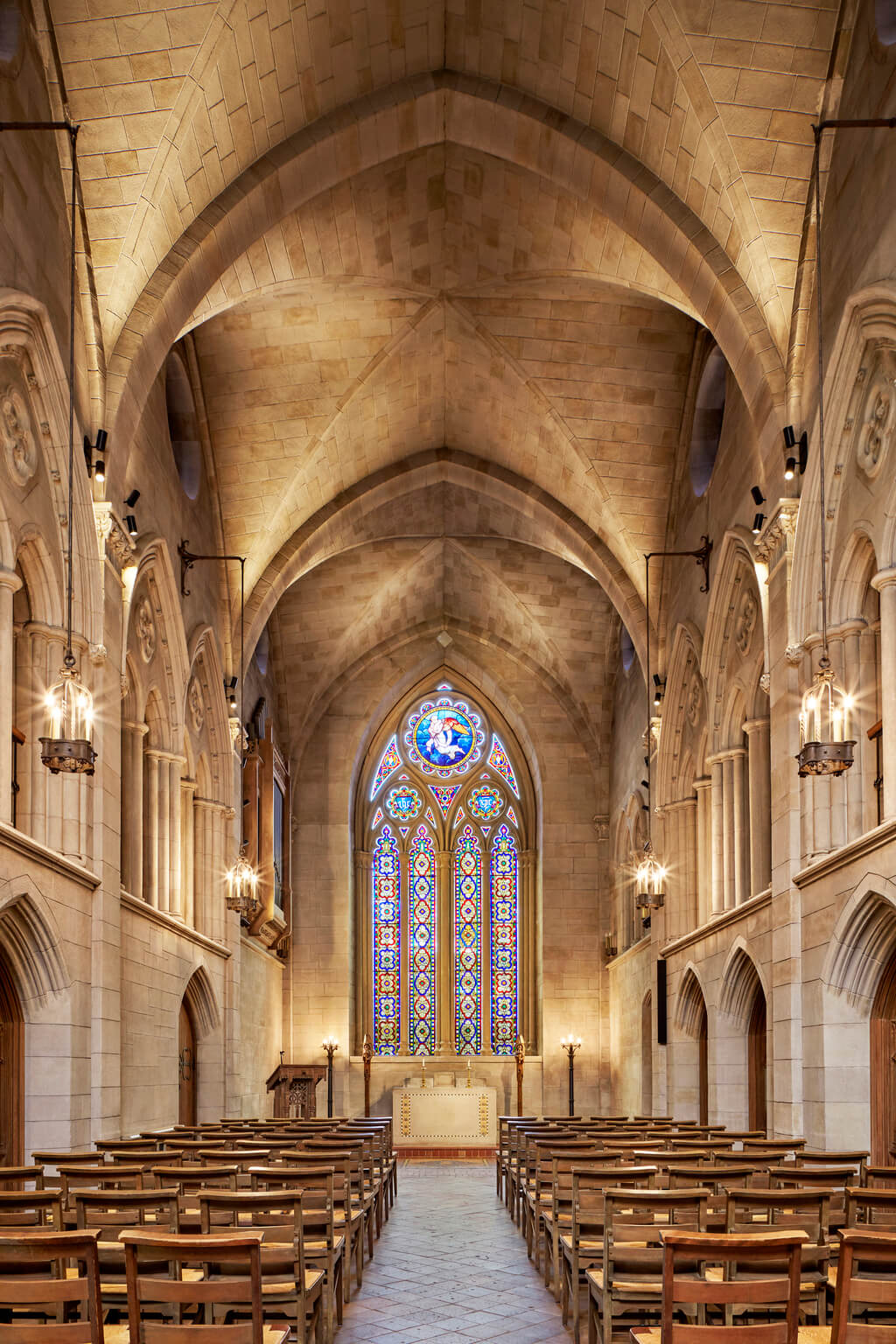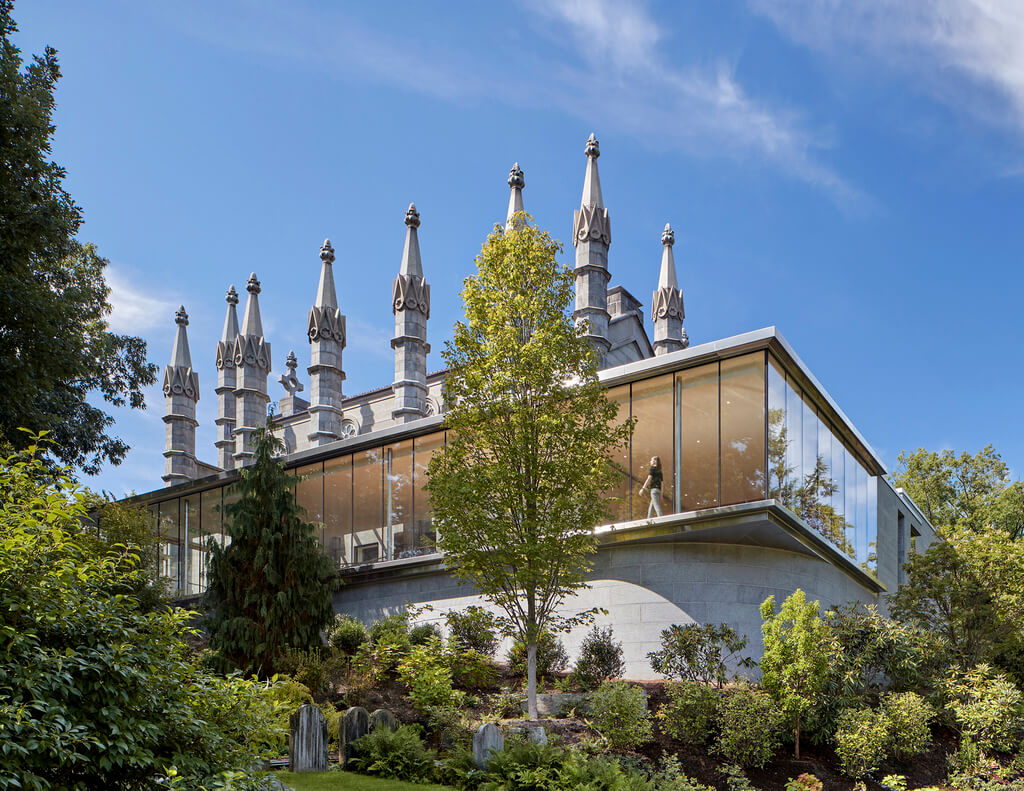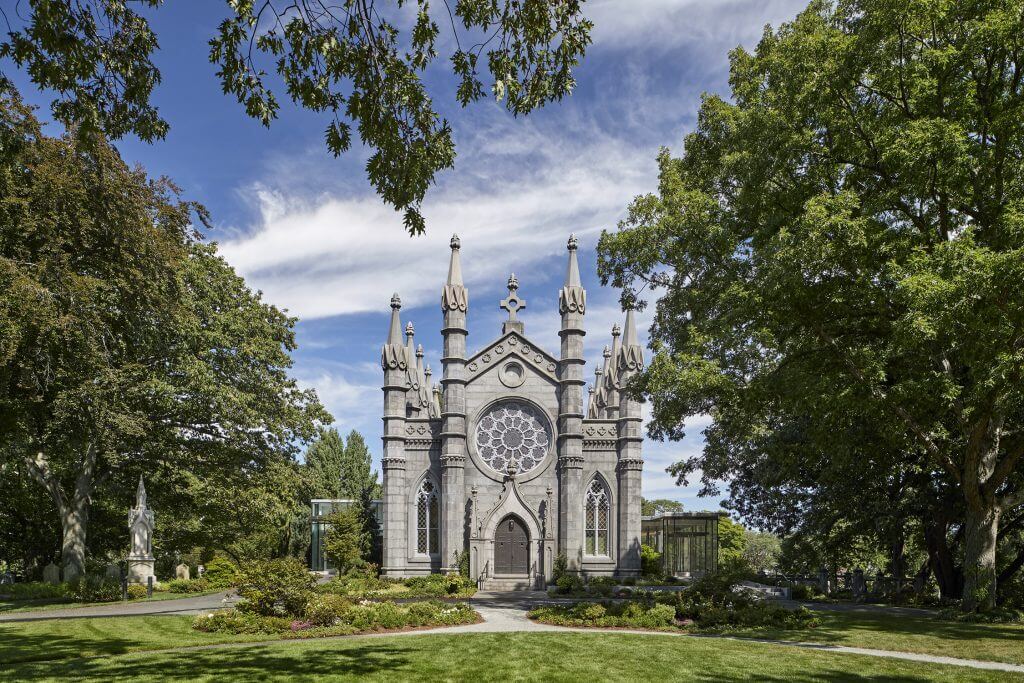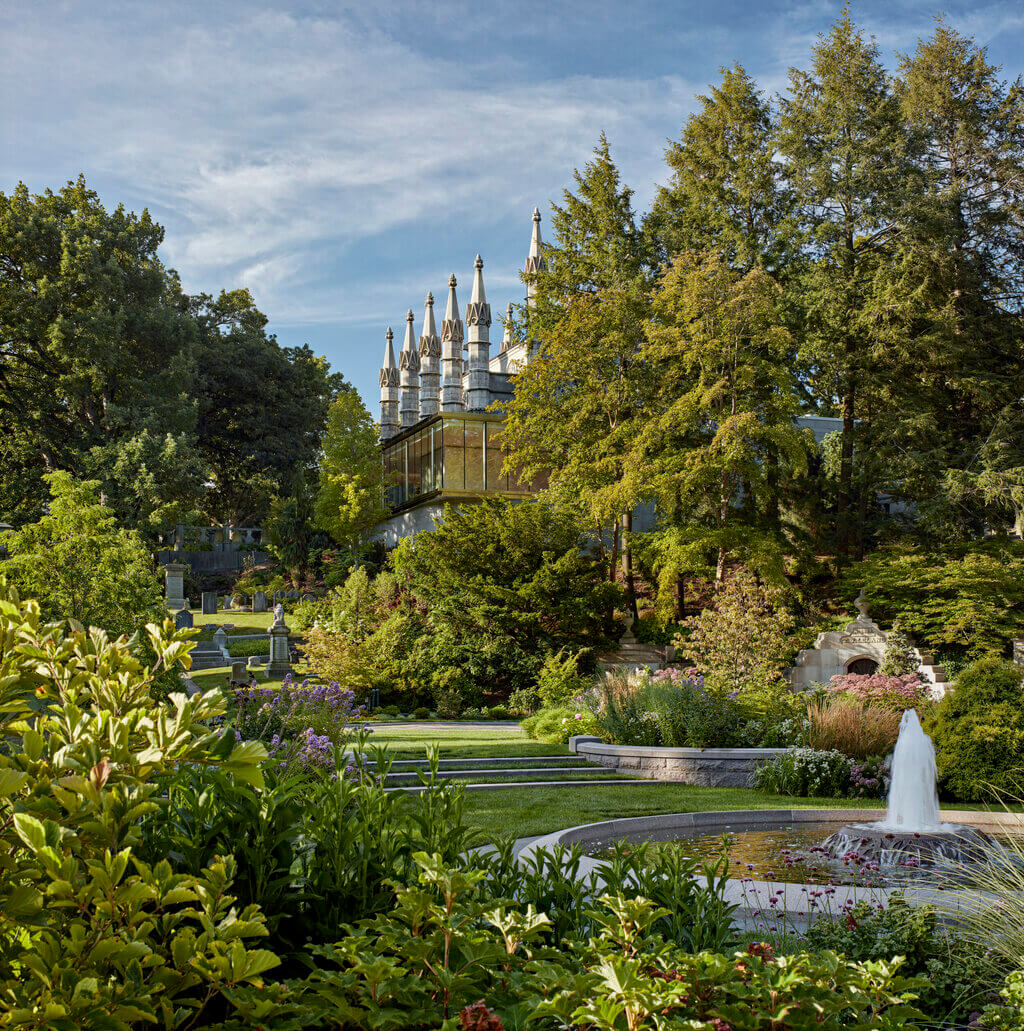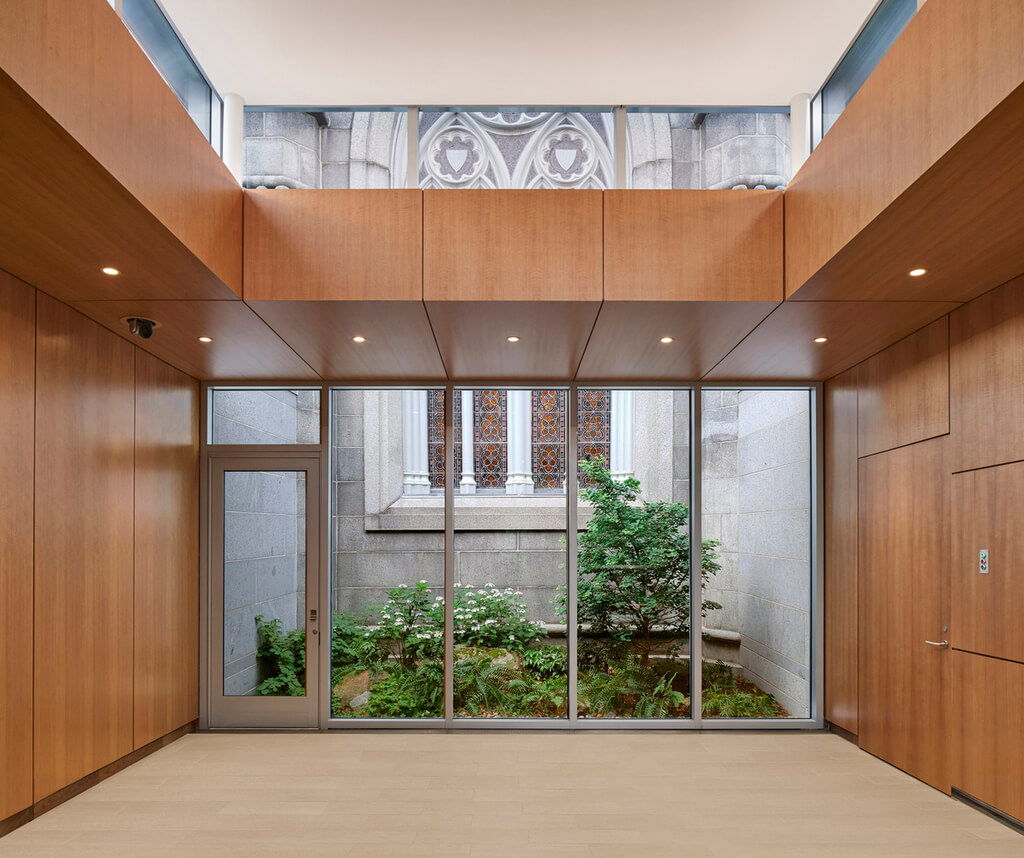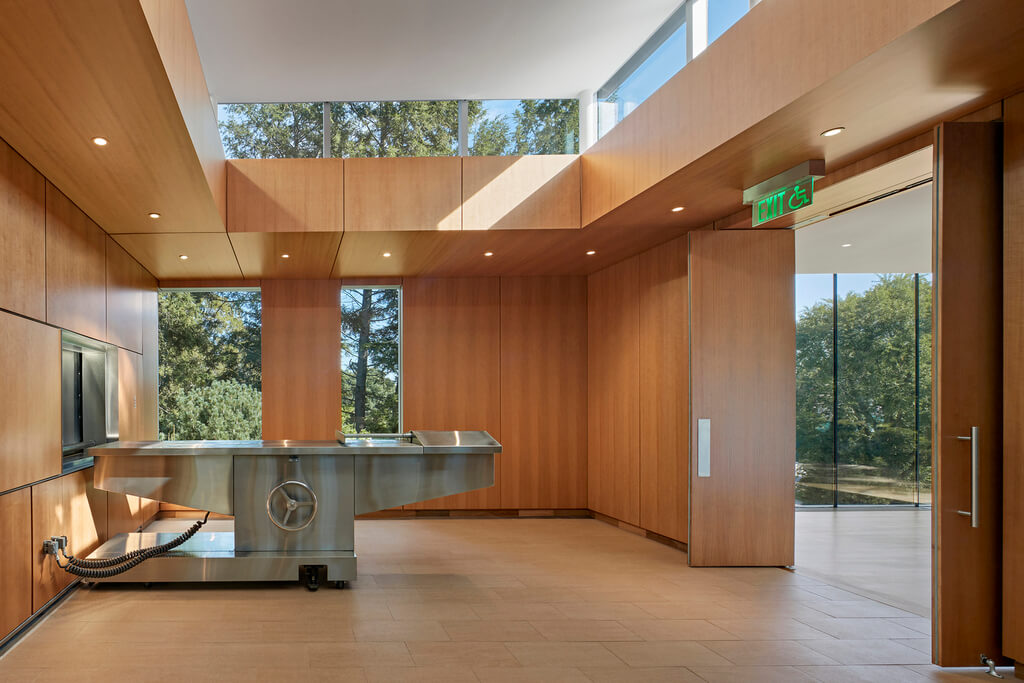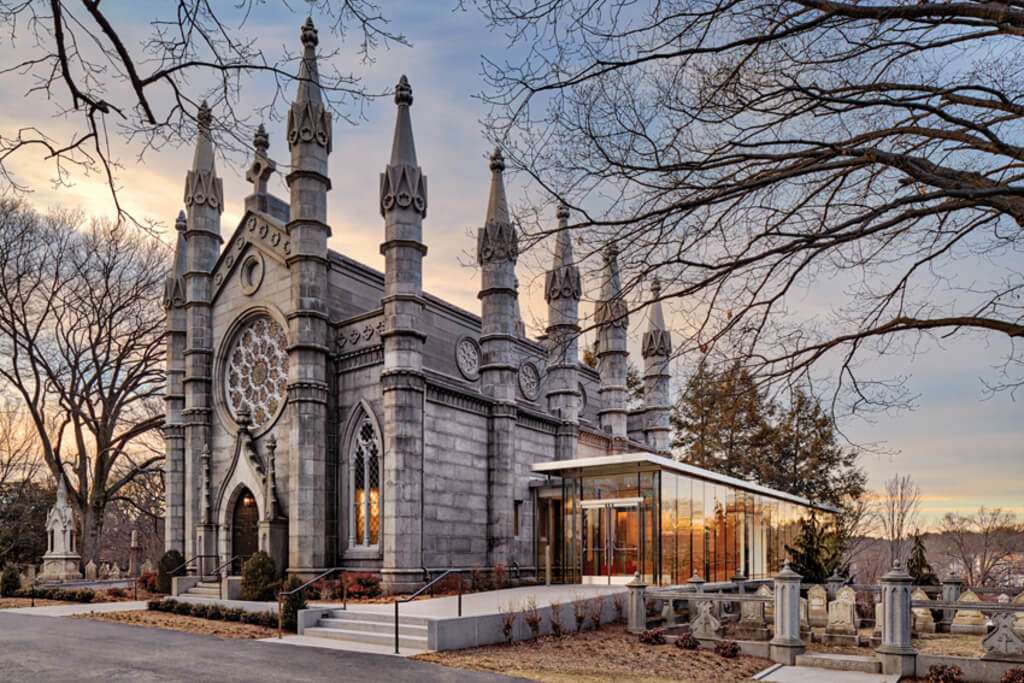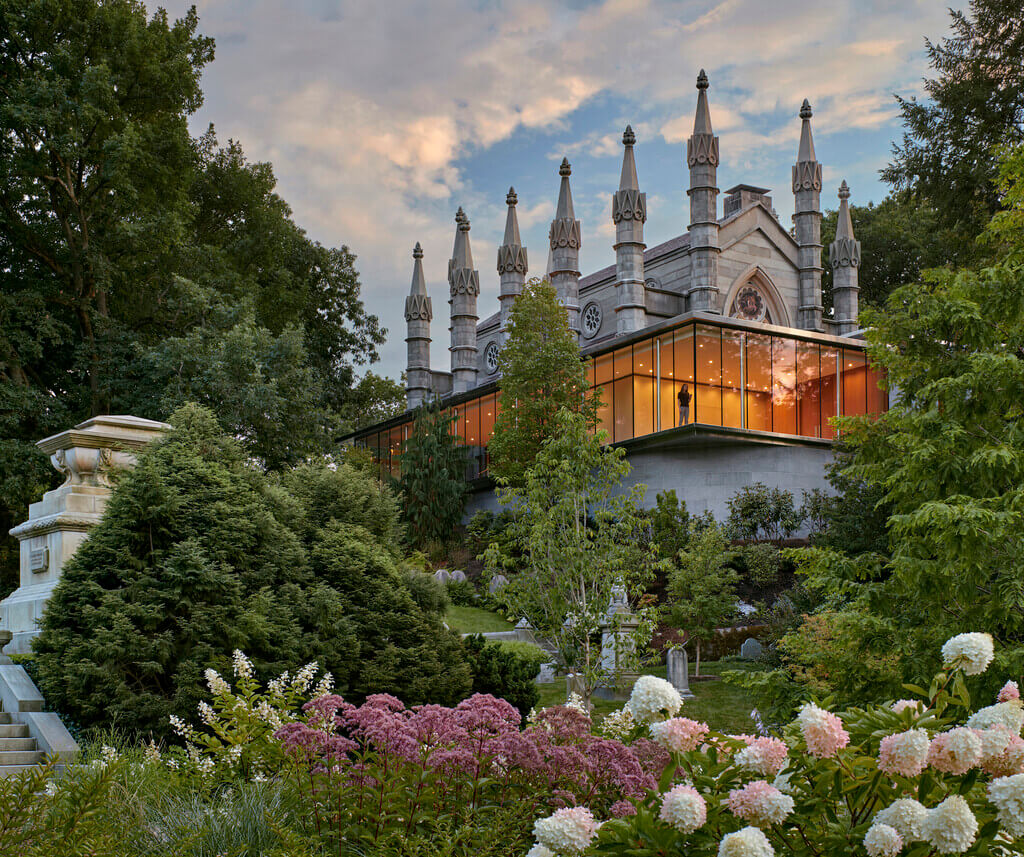Project Specifications
Architects: William Rawn Architects – Samuel Lasky, principal for design; Ellie Radich, Rob Wear, Andrew Jonic, Eric Rutgers, William Rawn, Adam Weber
Location: Massachusetts
Area: 1400sqft
Year of Commencement: 2016
Year of Completion: 2018
Client: Mount Auburn Cemetery
Cost: $15 Million
A Gothic chapel, a historic landmark, and a place for solace surrounded by the carefully designed landscape in the countryside of Watertown, United States sits the Mount Auburn Cemetery.
Designed with classic Gothic elements and architecture, this 200-year-old stone cemetery is known for its 19th-century beauty and delicate features, that complement the surrounding landscape that is famously known for beginning peace and serenity within its grounds. Perched on top of a small hill, the chapel quaintly sits above the greenery, towering into the sky like a monolithic stone masterpiece.
History and Existing Structure
Source: adsttc.com
Originally constructed in 1846 by Doctor Jacob Bigelow who was a physician and botanist, this space was created for healing and rejuvenation to take place as one walks through it. The expansive landscape was carefully planned out by Bigelow, which has come to be known as one of the most famous landscapes in the United States.
The Gothic Chapel itself has magnificent features like a 12-foot stained glass circular window that rests above the south-facing entrance or the large groin-vault roof that shapes the interiors.
Source: adsttc.com
The miniature octagonal towers rose from the perimeters of the point up into the sky at regular intervals, each pointing to the clouds majestically. The crematory of the Mount Auburn Cemetery was added into the chapel’s basement in 1899, which was the first of its kind for that specific area in Boston.
Architect Willard Sears who built the Isabella Stewart Gardner Museum in Boston renovated the chapel and added this part as well as a 160 seat Joseph Story Chapel made of reddish-brown sandstone which is present at the entrance. The chapel could seat 75 people and be slowly requiring an upgrade.
The Renovation
Source: adsttc.com
Hence, William Rawn Architects came into the picture. In 2016, the chapel needed an extension that could accommodate its growing visitors. It also needed an upgrade of acoustics, accessibility, lighting, and to operate on an energy-efficient basis. Based on all these new requirements, William Rawn Architects decided to create a modern and contemporary pavilion to encapsulate the essence and amplify the spirit of the existing structure.
This led to the creation of a new crematory that would accommodate families and religious groups who within the Boston metropolitan area did not have a specific one of this kind, that would not only provide cremation services, but also a place to venerate, honour and grieve the death within a peaceful environment. Additionally, the chapel itself was fitted with new HVAC and fire protection systems to keep it feasible in today’s conditions.
The Pavillion
Source: wickedlocal.com
Since the original structure stood on top of a hill, surrounded by 175 acres of gardens, this pavilion, the architects did not want to add something that would dampen or lessen the beauty and importance of the existing chapel. The solution was to create a glass-walled pavilion wrapped around the eastern, western, and part of the northern side of the chapel.
The intention was not to create a structure that would obstruct the view to the existing chapel, but one that would embrace and compliment it. Through the glass walls, one could still see the chapel it surrounded and provided a modern but welcome contrast to the 19th-century structure.
The low and horizontal nature of the structure was to emphasize the verticality of the original one. Another contrast between the old and the new is that as much as the chapel was ornate and derailed, the pavilion was extremely minimalist. Its glass walls with steel frames exude a very Mies Van Der Rohe-esque aesthetic.
Source: architecturalrecord.com
The Pavillion cantilevers out from the chapel walls sort of extending that view is out into the gardens, providing a clean upper view of the greenery. The low roof of the pavilion that sits just below the chapel’s cornice, is separated by a lengthy glass skylight that stretches across its length, illuminating the entrance ramp.
The interior of the pavilion is finished with beech flooring and wall panelling at the entrance reception desk, with small LED lighting that dots the low ceilings and efficiently lights up space at night times.
Spatial Planning
Source: adsttc.com
The Pavillion is organized in a linear plan, with its exterior perimeter facing the gardens. As one enters from the entrance ramp that’s attached to the side of the chapel wall, they come into the lobby and are welcomed by the glass walls and the views beyond. From there, they proceed to the Gathering room, with the gardens on the right. The gathering Room then leads to the viewing room where the cremation ceremonies take place.
Here, a view is directed to an internal garden that provides a space for self-reflection and contemplation that separates the pavilion from the main chapel. William Rawn Architects intended to create a very clear-cut circulation pattern that mainly focused on the views around Mount Auburn and the Chapel.
Hence, the clear and linear plan provides a very straightforward arrangement where the users walk through it, not being distracted by their movement or any abutting walls and doors, and can slowly move down the straight path, taking in the beauty that surrounds them.
A separate entrance for the crematorium personnel in the form of a glazed vestibule that is present at the west side of the south entrance is provided for easy access and maintenance without disturbing the users.
Source: adsttc.com
“Separating the public from daily operations is an important advantage of the new scheme,” says Gus Fraser, vice president of preservation and facilities at Mount Auburn Cemetery.
The Pavilion provides a panoramic view of the surrounding gardens, forests, and lawns that are dotted with different monuments and tombstones. Over the expansive landscapes of 4100 square foot, blueschist walls enclose the cemetery that looks similar to the grey hue of the chapel itself.
The Mount Auburn Cemetery’s Glass Pavilion by William Rawn Architects is a tried and true testament to how old and new can come together to form a harmonious amalgamation. The Pavilion complements the old stone chapel while the chapel and grounds provide the perfect scenic backdrop for this contemporary and modern structure.
The creation and presence of this crematory were extremely forward-thinking in nature, given the era and circumstances it was built under. While the concept of death has always been sacred and the practice of honouring the dead has been around for centuries now, the presence of crematoriums, cemeteries, graveyards, and more have always architecturally supported this concept.
Click here to learn more about kingdom valley islamabad.
Source: adsttc.com
The significance of this structure marks a huge step forward when it comes to death and veneration through spatial and natural healing. Cemeteries functionally only had one purpose and that was to honour the deceased with large expanses of land provided to bury them, but the Mount Auburn Cemetery provided the additional aspect of consolation to the mourners which is a concept that is often forgotten about in an architectural perspective.
Source: adsttc.com
Source: mountauburn.org
Source: squarespace-cdn.com
Source: adsttc.com
Source: adsttc.com
Source: buildingmedia.com
Source: archpaper.com
Providing spaces and areas to mourn losses, reflect upon one’s life and leave with a comforting and calming emotion is something that this Chapel did brilliantly and still does to this day.


